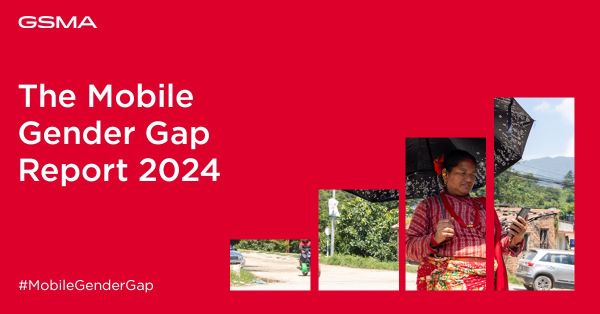
A significant 1.5 billion women (66%) of women in low-and middle-income countries (LMICs) are using mobile internet, with an additional additional 120 million women connecting to the internet via mobile in 2023.
However, an alarming 785 million women remain unconnected, with approximately 60% residing in South Asia and Sub-Saharan Africa.
This is according to the seventh edition of the annual ‘Mobile Gender Gap Report 2024’ by the GSMA launched today.
The report examines data on women’s mobile access and use across 12 LMICs, the barriers they face and how this compares with men. It is funded by the UK Foreign, Commonwealth and Development Office (FCDO) and the Swedish International Development Cooperation Agency (Sida) via the GSMA Mobile for Development Foundation, with research funded in part by the Bill & Melinda Gates Foundation. It provides stakeholders with recommendations to reduce the gender gap in mobile ownership and use, to unlock socio-economic benefits for women everywhere.
The 2024 report reveals a shift: the gender gap in mobile internet adoption across LMICs has narrowed for the first time since 2020, driven by women adopting it at a faster rate than men, particularly in South Asia. Women are now 15% less likely than men to use mobile internet across LMICs. Notable changes include India, where women’s internet adoption rose to 37%, while adoption among men remained stable, narrowing the gender gap from 40% to 30%. In Indonesia, women’s rate of adoption exceeded men’s, reducing the gender gap from 15% to 8%. Also, Sub-Saharan Africa saw a slight narrowing of the gender gap for the first time in five years. Though women in South Asia and Sub-Saharan Africa are still the least likely to use mobile internet compared to men, with gender gaps of 31% and 32%, respectively.
The gender gap persists across internet use cases
Across LMICs, there are now 1.4 billion women who own a smartphone, meaning that 60% of women now own a smartphone device. In 2023, the smartphone gender gap narrowed slightly from 15% to 13% across LMICs. Progress was driven primarily by women in South Asia who shrunk the gap from 41% to 34%. However, there are still 40% of women in LMICs, totalling 940 million, who do not own a smartphone.
Mobile remains the primary – and often only – way people in LMICs access the internet, accounting for 84% of broadband connections in 2023. Once someone owns a smartphone, they are considerably more likely to adopt mobile internet and use it regularly which can unlock myriad socio-economic benefits. However, once women are online, they often face barriers to using mobile internet as frequently or for the same range of use cases as men.
Addressing use and adoption barriers
In surveyed countries, the primary obstacles to mobile internet adoption reported among both men and women who are aware of it are affordability – primarily of handsets, literacy, and digital skills. However, affordability is particularly challenging for women due to factors like the gender pay gap and lower employment rates. Beyond initial adoption, the top barriers to usage vary more by country than by gender, encompassing issues such as safety and security concerns, affordability (concerning data but also handsets), and connectivity experience.
Although barriers to mobile adoption and use are primarily shaped by country rather than gender, women lag behind men in advancing through the mobile internet user journey. This discrepancy partly arises from women facing more acute barriers, driven by social norms and structural inequalities such as unequal access to education and income.
Addressing the mobile gender gap holds the potential to deliver significant social and commercial benefits for individuals, societies, and economies. Connectivity is also critical to achieving the 17 UN SDGs – including those related to health, education, and financial inclusion. The GSMA estimates that closing the gender gap in mobile ownership and usage across LMICs could deliver an additional $230 billion in revenue to the mobile industry over an eight-year period.
Claire Sibthorpe Head of Digital Inclusion at the GSMA comments; “The reduction in the mobile internet gender gap is promising but sustaining momentum is fragile. We are collaborating with the industry, policymakers and other relevant partners to address key barriers including affordability, awareness and digital skills. Our Connected Women Commitment Initiative shows that setting clear targets and taking informed, focused action can make a difference; since 2016 our operator partners have collectively reached over 70 million additional women with mobile internet and mobile money services.
Gender gaps stem from complex social, economic, and cultural factors, that require collective action from a broad set of organisations. We are calling on stakeholders including governments, MNOs and development groups to work together to measure, understand and tackle women’s needs and barriers effectively. Together, we can ensure digital and financial inclusion for women everywhere.”








